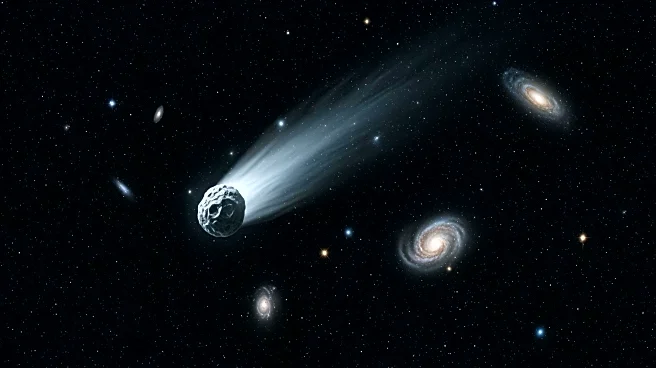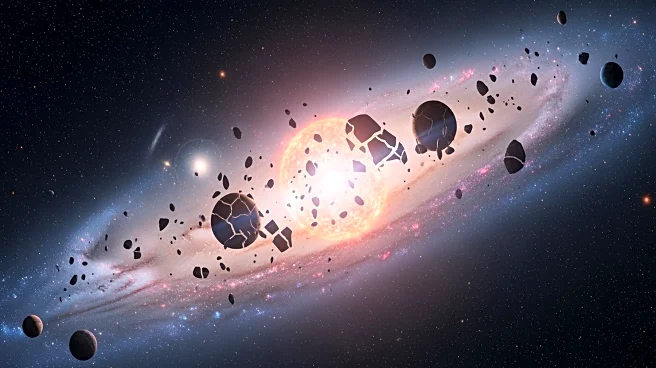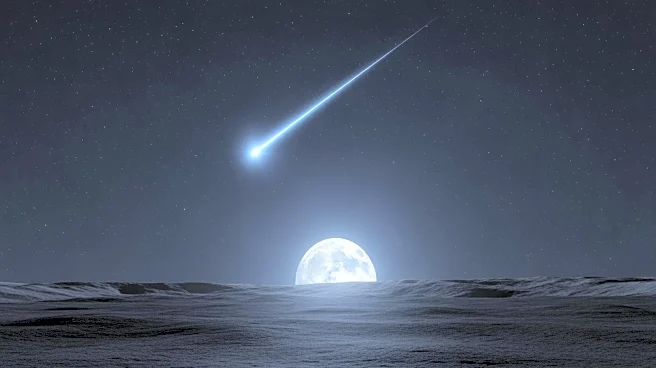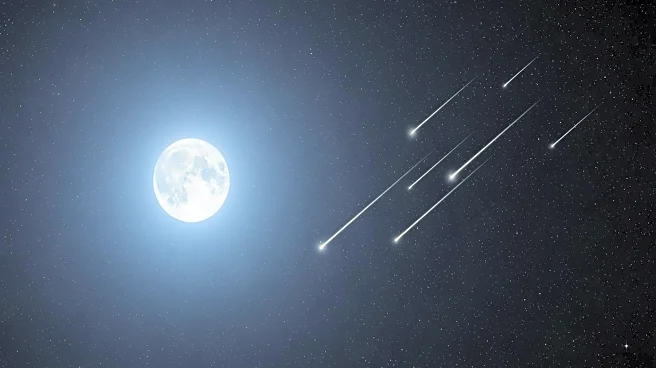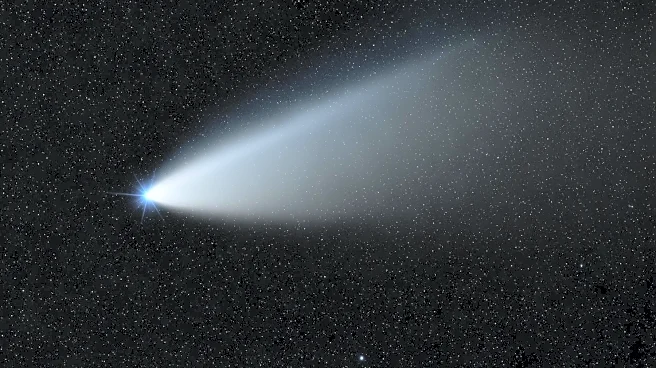What's Happening?
China's Chang'e 6 mission has returned the first-ever samples from the far side of the Moon, revealing fragments of rare meteorites known as CI chondrites. These meteorites, rich in carbon and water, may
hold vital clues about how water arrived on Earth. The discovery suggests that asteroids carrying volatile elements, including water, struck both the Earth and Moon in the distant past, delivering essential components for life. The findings support the theory that Earth's water was delivered through ancient impacts rather than forming natively.
Why It's Important?
The presence of CI chondrites on the Moon provides a rare glimpse into the early solar system's material exchange, offering insights into the origins of Earth's water. This discovery strengthens the hypothesis that ancient meteorite impacts played a significant role in delivering water to Earth, a crucial element for life. Understanding these processes can help scientists piece together the history of water on Earth and its role in making the planet habitable.
What's Next?
Further analysis of the lunar samples could provide more detailed information about the composition and origins of the meteorites. This research may lead to a better understanding of the early solar system and the processes that contributed to Earth's habitability. Future lunar missions may continue to explore the Moon's surface for additional clues about the history of water in the solar system.
Beyond the Headlines
The discovery of CI chondrites on the Moon highlights the Moon's role as a historical archive of the solar system. The preservation of these meteorites on the Moon, shielded from Earth's weathering processes, offers a unique opportunity to study ancient cosmic events. This research underscores the interconnectedness of celestial bodies and the shared history of Earth and its lunar neighbor.



